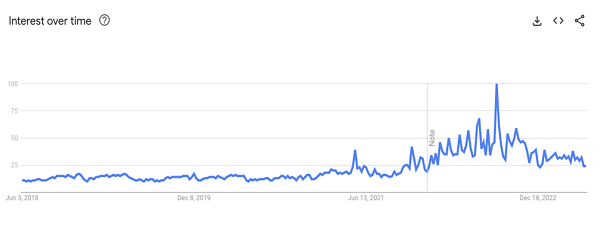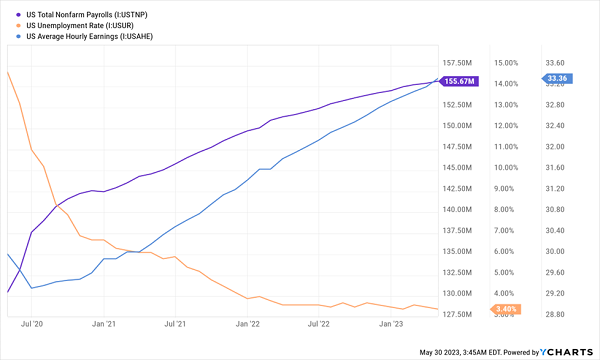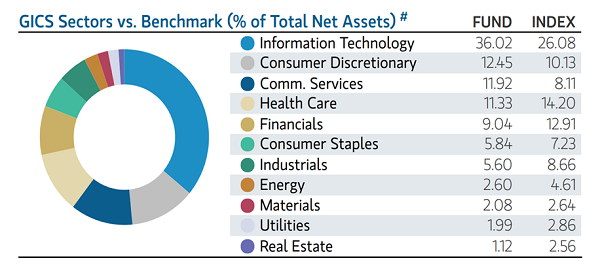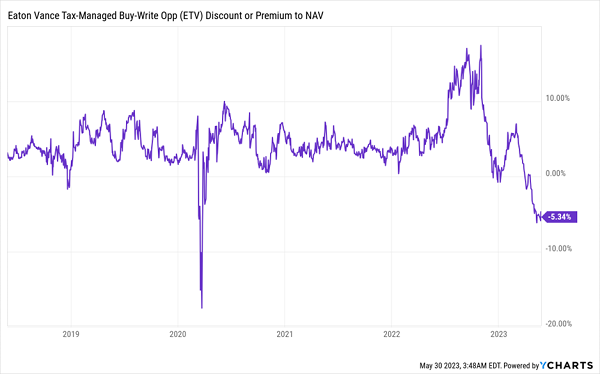Don’t let the debt-ceiling fracas (or whatever doomsday scenario the media is obsessing over on any given day) distract you: this economy is better than it’s been in years—even if that hasn’t (yet) shown up in the stock market.
This disconnect between what the media is preaching and the facts on the ground is more than a fact—it’s an opportunity for us contrarian dividend investors. And we’re going to exploit it with our favorite investments: bargain-priced (and high-yielding!) closed-end funds (CEFs).
Thanks to all the irrational gloom out there, many CEFs still trade at attractive discounts. As the public comes around (and the data we’ll look at next shows they are), CEFs are likely to rise, both because of their low valuations and gains in the broader market.
One CEF, called the Eaton Vance Tax-Managed Buy-Write Opportunities Fund (ETV), is a good example. We’ll dive into ETV, which yields 9.3% and trades at an unusual 5.3% discount, in a moment.
Before that, though, let’s zero in on the data outlining our opportunity here.
First, as you no doubt know, inflation continues to slow—at 4.9%, it’s now back to mid-2021 levels. Moreover, inflation worries are waning, which is a good predictor of lower future inflation. According to Google Trends, interest in the word “inflation” has fallen to mid-2021 levels—when inflation was where it is now—and it’s falling fast.

Source: Google
Similarly, the University of Michigan Consumer Sentiment survey has jumped from the extreme pessimism that hit in mid-2022, again returning to mid-2021 levels. But even so—and here’s where the disconnect comes in—consumer confidence is still low compared to the start of the pandemic (the gray area in the chart below).
Americans Feeling Better—But Pessimism Is Still Overdone

In other words, Americans are less confident in the economy than they were when restaurants, bars and retail shops were closed! And this is despite improvements in the employment market.
Unemployment Crashing as Jobs/Wages Soar

The reason for Americans’ pessimism, despite pretty well all economic indicators to the contrary is, in my view, entirely due to the media’s overly negative reporting. That situation just can’t last—and therein likes our opportunity.
How CEFs Can Double Our Growth (With 9%+ Dividends)
To be sure, buying when sentiment is low is how contrarians make money in the stock market. Buying at the market low last year, for example, would’ve netted a near 20% return in seven months (or 31.4% annualized). And buying at the 2020 lows would’ve resulted in a 70% return in about three years, or 18.3% annualized.
With signs that a turn in consumer sentiment is already underway, returns that big aren’t necessarily in the cards with regular stocks now. But we can, in a sense, “rewind the clock” with CEFs. That’s because lots of CEFs trade at “double discounts” today, with market prices below their net asset value (NAV, or the value of the assets they hold), plus portfolios that are themselves underperforming due to short-term pessimism.
Buying now, in other words, gives us three ways to book gains in CEFs: through their closing discounts; through NAV growth; and through CEFs’ huge dividends—many of which yield north of 9% today.
Which brings me back to ETV, which boasts a 9.3% yield and a payout that comes our way monthly. ETV holds blue chip companies and is diversified across the economy. It does lean toward tech companies, at 26% of the portfolio and with Apple (AAPL), Microsoft (MSFT) and Amazon.com (AMZN) among its top holdings. Tech has shot higher this year, but the sector is still well off its 2021 highs and therefore has plenty more room to run.
The rest of the portfolio is in sectors that are more oversold, like financials, health care and consumer discretionary:

Source: Eaton-Vance Tax-Managed Buy-Write Opportunities Fund fact sheet
We also like ETV because it sells call options on its portfolio. That’s a nice way to generate extra cash because no matter how these trades play out (i.e., whether the option buyer ends up buying the stock from ETV’s portfolio or not), the fund keeps the money it charges for the option itself.
Like the broader market, ETV’s underlying portfolio—its NAV, in other words—has been recovering and still has room to grow (the first of our two “discounts”). But CEF investors, who are more cautious than stock investors, haven’t noticed. Which is why the fund’s market price, in purple below, has lagged.
ETV Soars—CEF Investors Shrug

This has resulted in a big discount to NAV (our second “discount”) for ETV, which is unusual given that this fund is usually priced at a sizable premium to NAV.
ETV’s Past Strength

Consider this: if ETV gets back to its 5% average premium from before the pandemic, it would result in an 11% gain in the share price, in addition to its 9.3% dividend yield. So we’re talking 20% total returns here, with nearly half that in cash.
And that’s before growth in the fund’s NAV, which is likely to rise with the market. Something similar happened during the pandemic, when ETV saw 50%+ gains over the year and a half stemming from the start of the crisis, as its premium swiftly returned and its NAV gained, too.
Closing Discount, Surging NAV Boosted ETV During COVID

History looks set to repeat, but this time ETV’s discount and NAV look likely to recover because the economy is stronger than most people think, and they’re slowly realizing this, despite the media’s obsession with the debt ceiling and inflation.
5 Critical Buys for 20%+ Gains (and Steady 9% Dividends)
With the S&P 500 still short of its 2021 highs, and investors way out of step with the facts on the ground, our opportunity is very much alive here. ETV is one way to play it, but I’ve got 5 other CEFs trading at deeper discounts that I’m urging investors to buy immediately.
These 5 income plays yield 9% now and pay you every single month, too! And thanks to their deep discounts, I’m forecasting 20%+ average price gains in the next year.

Recent Comments